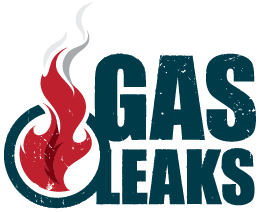As leaders from around the world gathered in New York City last week to discuss energy choices that could make or break our collective response to the climate crisis, Gas Leaks was there with a vital message: LNG is methane gas!
Despite countless national pledges to move off fossil fuels, the world is rapidly expanding the use of “natural” gas — especially liquefied gas (LNG) for export. That’s why Gas Leaks collaborated with Rainforest Action Network to blanket the streets around the United Nations Climate Ambition Summit with PSA ads debunking the myth of “clean” natural gas. From more than 1,845 locations — in subways to street-level digital billboards to taxis — our “LNG=methane” ads garnered an estimated 12 million views.
The campaign was a small but strategic counterweight to the millions of dollars the fossil fuel industry has spent trying to convince the public that gas is a “clean” energy, comparable to wind and solar power. In reality, LNG primarily consists of planet-warming methane, which is more than 80 times as potent a greenhouse gas as carbon dioxide.
“There is no such thing as ‘natural’ rock – we call that coal. So why does methane gas get a pass as ‘natural’? People need to understand that this is a fossil fuel that harms our health, our communities, and our climate,” said Roishetta Ozane, Founder of the Vessel Project. LNG is a massive threat to Gulf Coast communities and anyone near “natural” gas pipelines, power plants, factories, and other toxic projects.
Industry marketing of LNG leaves out the vast amount of pollution from processing gas to a liquid form before it’s put on tanker ships for export. The Sierra Club estimates that when all of the pollution is tallied up, the United States’ current fleet of LNG export terminals have the same climate impact as 138 coal plants, with the industry pushing 22 additional facilities that would produce as much climate pollution as 440 coal plants! That’s pollution that would be with us for decades to come if the industry is successful in their LNG expansion schemes.
As with most fossil fuel projects, these giant facilities are being built in communities of color that already live with elevated levels of toxic air pollution. These “sacrifice zones” are disproportionately Black, brown, and low-income neighborhoods. Residents face numerous health issues, including asthma, congenital disabilities, and cancer, not to mention the risk of explosions and equipment failures.
During Climate Week, Gas Leaks joined more than 75,000 community activists who marched through the streets of Manhattan in the Rally to End Fossil Fuels — estimated to be the largest climate rally in the world since before the COVID-19 pandemic. We were also on hand as frontline activists fighting polluting LNG facilities in their communities protested outside Bank of America — which has loaned more than $7 billion to LNG projects in recent years. People like Manning Rollerson of Freeport, Texas, risked arrest to say: “Enough is Enough.”
For the health of the climate and for people like Rollerson trying to protect the health of their communities, it’s time for our leaders to step up.
What Can We Do?
- Tell the Biden Administration: Stop Approving LNG Export Facilities!
- Urge the Department of Transportation and President Biden to halt LNG by Rail permanently.
- Support Frontline Groups: Follow and support organizations like the Vessel Project, Chester Environmental Justice, Frontlines to FERC, and Rise St. James.
Read Related Blogs
Why Are You Paying More for Energy? Blame Natural Gas Exports







